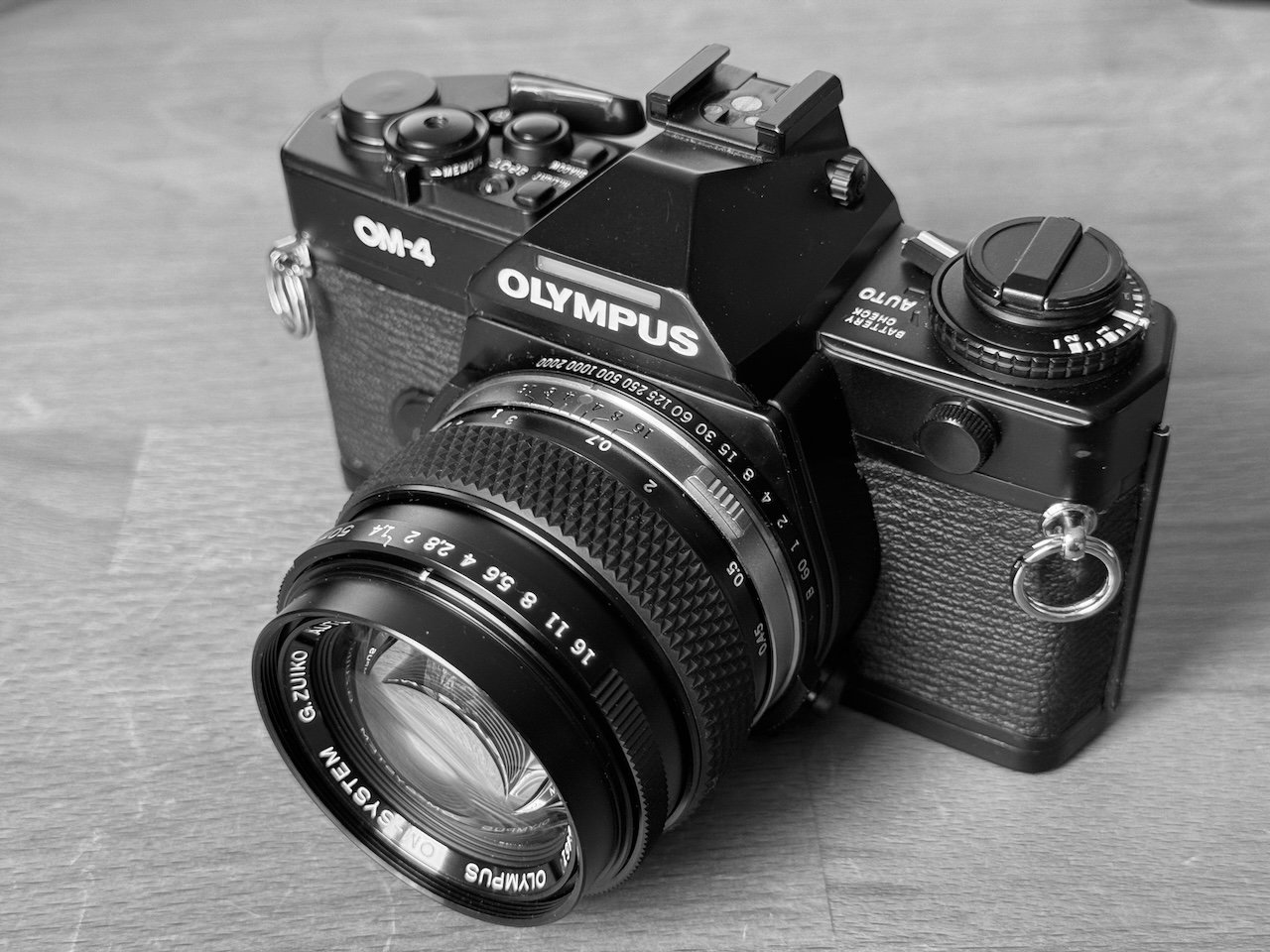Buying Vintage Cameras and Lenses: A Note to Myself
A short-lived appearance in my camera collection - the Olympus OM-4 with a Zuiko 50mm f1.4.
Some recent experiences made me re-think my approach to buying vintage cameras (and lenses). I am learning from mistakes. And in order to avoid the same mistakes in the future again and buy stuff that either doesn’t work upon arrival or at least has a big risks of failing in the near future.
As a bit of a background - I have only started buying vintage film photography cameras in 2022. My first experience was ill-fated, first with a defective Nikon FE-2, then one exchange model with different issues. Ever since, I have been really lucky. Until February and March 2024.
At some point in late 2023, I had set my mind on buying a series of SLR cameras - some higher end or top models from all major camera manufacturers plus some standard focal length lenses (50mm by all means, 28mm and 135mm optional). With major camera manufacturers I mean Canon, Nikon, Pentax, Minolta and Olympus. For some manufacturers like Nikon and Canon it was relatively easy, for others, especially Pentax and to a lesser extent, Olympus, it was more difficult.
I ended up with buying a really nice Canon A-1 for a good price and an F-1 in pristine condition that was not breaking the bank. I was lucky enough to find a really good deal on a Minolta X-700. And I found a very nice Nikon FM-2. And then tried to find something similar from Pentax. An LX would have been my first choice, but what I have seen so far they are either beaten up badly or way too expensive. Olympus was slightly easier, so I started eyeing am OM-4 (either the standard version or, even better, an OM-4 Ti). There was quite some choice and so I ended up buying a relatively well-kept OM-4 from a reputable German seller on Ebay.
At first glance, the OM-4 seemed to work fine, until I put a roll of film through it. The film came back empty, meaning that the transport wasn’t working properly. And then, after some additional tests, the OM-4 gave up altogether. After returning it to the seller, he confirmed that the electronics had given up. By this time, I had already ordered two additional lenses - the Zuiko 50mm f1.4 and the 28mm f3.5 for the OM-4. So I was checking alternative models. The OM-1 or OM-3 sprang to mind, as those were mechanical models that should work without batteries, too. But - same issue as with the Pentax LX - either beaten up or way too expensive (in the case of the OM-3, there were very few on the market).
So I did some research on (cheap) alternatives, similar to the Nikon F-301 as a replacement for the ill-fated Nikon FE-2. The entry level Olympus cameras were the ones with double-digits in their name - OM-10, OM-20, OM-30, and OM-40. Some with added special features such as “program”. Looking up those cameras, there seemed to be quite a large choice, and the prices were sometimes really low. I picked an OM-40 in relatively good shape for just under 60 Euros, only to notice that it wasn’t working as it should once it arrived. Sent it back to the seller with no issues. The next one I found was 69 Euros, and it seems to be working fine. I put a roll of Kodak Gold 200 through it, and everything looks good.
A working Olympus OM-40 Program
***
As if the Olympus intermezzo was not bad enough, I also picked up some sub-standard lenses recently. Until then, my lens-buying experience was largely positive. There is a huge choice of vintage lenses these days. Most of the ones I bought were in really good condition with the exception of a Nikkor 135mm which was really beaten up (but cheap) and it is still working fine even if the focus ring has to much play and is slightly bent.
But then, in March, I found a Nikkor 35mm which looked good cosmetically and was reasonably priced. This time, the focus ring was so loose that it is almost unusable. It can be fixed, but still will increase the overall price substantially. Next up, a Canon nFD 24mm with a loose focus ring, not as bad as the Nikkor, but still too much for my liking. And a Canon 135mm with a loose focus ring - again, usable, but not how it should be. Both can be repaired, but this is kind of annoying and time consuming. Everything was jinxed.
A Nikkor that is almost unusable for its loose focus ring
Checklist for vintage cameras and lenses
Seller
Does he or she accept returns?
How good are the photos and the item description?
Is anything missing from the item description?
Cameras
State of usage - prefer slightly used cameras over completely unused as mechanics might be stuck or about to get stuck.
Mechanical over electronic mechanisms.
Slightly used cheap cameras over unused or heavily used expensive cameras.
Lenses
External cosmetics are overrated.
Look out for fungus, haze, scratches or dust - if nothing mentioned in description, stay away.
Look out for description of mechanical operation (especially focus ring or aperture ring).


